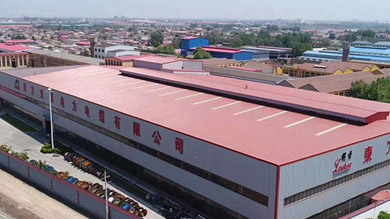វិច្ឆិកា . 18, 2024 18:36 Back to list
wafer style check valve
The Importance and Functionality of Wafer Style Check Valves
In the world of fluid dynamics and system control, valves play a crucial role in ensuring the efficient flow of fluids while preventing backflow. Among the various types of valves, the wafer style check valve stands out as an essential component in numerous applications. This article delves into the importance, functionality, and advantages of wafer style check valves.
What is a Wafer Style Check Valve?
A wafer style check valve is a type of valve designed to allow fluid to flow in one direction while preventing reverse flow. These valves are typically installed between two flanges, making them compact and ideal for tight spaces. Unlike traditional check valves that can be bulky, wafer style check valves provide a streamlined solution, thus enhancing the overall efficiency of piping systems.
Design and Operation
The design of wafer style check valves is quite simple yet effective. The primary feature of these valves is the disc, which is the moving part responsible for controlling the flow. When the fluid flows in the intended direction, the disc opens, allowing the fluid to pass through. Conversely, when there is a drop in pressure or reverse flow, the disc closes, thereby blocking the backflow and protecting the system from potential damage.
This simplicity in design contributes to their reliability and ease of maintenance. The absence of complex mechanisms reduces the number of failure points in the system, making wafer style check valves a trusted choice among engineers and system designers.
Applications
wafer style check valve

Wafer style check valves are utilized in a wide range of applications, including water treatment plants, oil and gas pipelines, HVAC systems, and various industrial processes. They are particularly advantageous in systems where space is limited, as their compact design allows for easy installation between existing flanges.
Additionally, these valves are suitable for use with both liquid and gas media, making them versatile options for many industries. Their ability to prevent backflow minimizes the risk of contamination and damage to equipment, thus ensuring the integrity of the system.
Advantages
One of the primary advantages of wafer style check valves is their compact size, which leads to lower material costs and less weight in piping systems. This feature makes them an attractive choice for engineers looking to optimize their designs without sacrificing performance.
Furthermore, wafer style check valves are generally more cost-effective than other types of check valves, such as swing check valves or lift check valves. This is due to their straightforward design and the reduced materials required for manufacturing.
Another significant advantage is their ability to handle high flow rates with minimum pressure loss. This characteristic is particularly valuable in applications where maintaining optimal flow conditions is crucial.
Conclusion
In summary, wafer style check valves are indispensable components in numerous fluid control systems. Their efficient design, reliable performance, and versatility make them a preferred choice for many applications. As industries continue to evolve and demand more compact and efficient solutions, wafer style check valves will undoubtedly play a pivotal role in shaping the future of fluid handling technologies. By understanding their functionality and advantages, engineers and system designers can make informed decisions that enhance the reliability and efficiency of their systems, ultimately contributing to improved operational performance.
Share
-
Reliable Wafer Type Butterfly Valves for Every IndustryNewsJul.25,2025
-
Reliable Flow Control Begins with the Right Ball Check ValveNewsJul.25,2025
-
Precision Flow Control Starts with Quality ValvesNewsJul.25,2025
-
Industrial Flow Control ReliabilityNewsJul.25,2025
-
Engineered for Efficiency Gate Valves That Power Industrial PerformanceNewsJul.25,2025
-
Empowering Infrastructure Through Quality ManufacturingNewsJul.25,2025